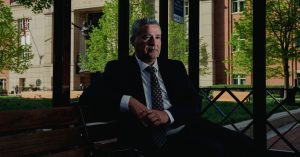Electrostatic capacitors are essential components in modern electronics, providing energy storage and power for a wide range of devices. However, the use of ferroelectric materials in capacitors has posed challenges due to significant energy loss. Sang-Hoon Bae and his team at Washington University in St. Louis have developed a novel approach to overcome this issue by controlling the relaxation time of ferroelectric capacitors using 2D materials. By creating 2D/3D/2D heterostructures, they were able to minimize energy loss while preserving the advantageous properties of ferroelectric materials.
The novel heterostructures developed by Bae and his team consist of atomically thin layers of 2D and 3D materials with carefully engineered bonds between each layer. This unique design allows for a stack that is only about 30 nanometers thick, significantly smaller than an average virus particle. By incorporating a very thin 3D core between two outer 2D layers, the team was able to achieve an energy density up to 19 times higher than commercially available ferroelectric capacitors, with an efficiency over 90%.
The key innovation in Bae’s research lies in the ability to modulate dielectric relaxation time by introducing a small gap in the material structure. This new physical phenomenon allows for the manipulation of dielectric materials in a way that prevents polarization and loss of charge capability. This breakthrough opens up opportunities for high-performance electronic devices, such as high-power electronics, high-frequency wireless communication systems, and integrated circuit chips, which are crucial for sectors like electric vehicles and infrastructure development.
Bae’s novel heterostructure material has the potential to revolutionize energy storage in electronics by enabling ultrafast charging and discharging with high energy densities. While the current performance of the material already exceeds that of other labs, Bae and his team are working to further optimize the structure to meet the demand for high-performance capacitors in large electronics, including electric vehicles and other green technologies. By enhancing the structure, they aim to ensure consistent storage capacity over repeated charges, making the material suitable for a wide range of applications.
The development of efficient energy storage solutions is essential for the transition to next-generation electronics components. Bae’s research represents a significant advancement in the field of energy storage, offering a promising path towards addressing the need for high-power and high-energy density capacitors. By continuing to improve the novel heterostructure material, Bae and his team are poised to make a meaningful impact on the electronics industry and contribute to the development of sustainable technologies.





